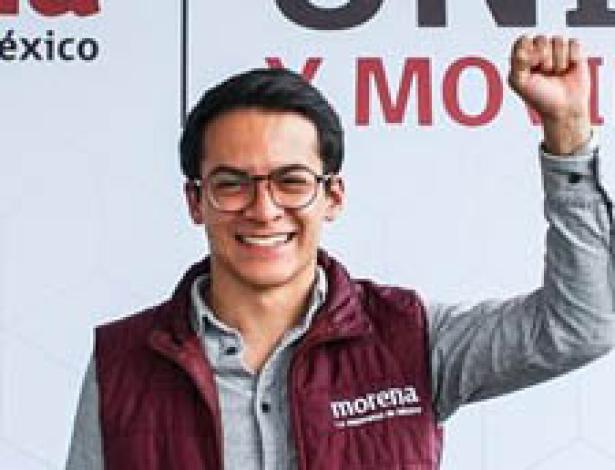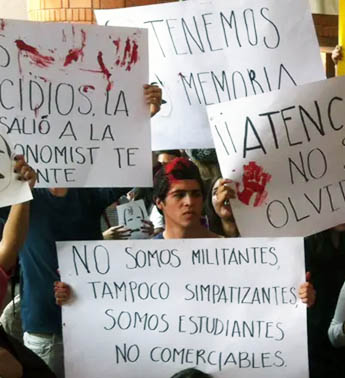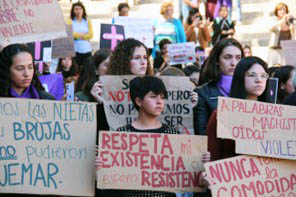I got a new car in 2014, the same year Morena became a Mexican political party. This new car — my first-ever brand new one — had me thoroughly excited. No scratches, no noises, no problems!
Fast forward eight years. My car has problems. OK, some count as my own fault, like the time I left the car in drive when I exited and the car promptly propelled itself into a ditch. I blame other mishaps on acts of nature, like those mice that ate all the wiring. And don’t get me started on that faulty AC that crashed as soon as the warranty expired.
Morena, meanwhile, began life as a party of a brand-new design, as a civil society organization based in México’s social movements. Andrés Manuel López Obrador led the way. He had left the PRD party, itself a democratic breakaway from the PRI, México’s long-time ruling party. Other left-leaning PRD militants joined Morena when its members voted to register as a political party.
Did this new Morena come with design flaws? Sure did. In an attempt to be as democratic as possible, for instance, the party allowing anyone and everyone to become a member and run for office under the Morena banner. The more popular that banner became, the more opportunists rushed into Morena and ran for office under it.
Did Morena run into problems beyond the party’s control? Most certainly. As always, the United States wants a servant south of the border, not a neighbor. US officials right now are threatening to sue México under existing free trade rules if the Morena government moves to take control of its own energy sector.
Is Morena facing problems caused by its own actions and inactions? Of course, perhaps most notably by failing to maintain and strengthen its social movement base.
But problems always become inevitable as time passes. I’m not ready to junk my eight-year-old car. And within Morena we can see a new fix-it spirit. A younger generation of activists, young people like Alejandro Torres, our interviewee this week, have the technical skills and visionary creativity to do much more than just keep the old buggy running. They’re building a vehicle for real revolutionary change.
|
Morena has a Youth Section. Who participates and why? The murder of the Ayotzinapa students in 2014 electrified young people of my generation and turned us from passive dissatisfaction into an activist social force. Students, particularly from the public universities, became determined to stop authoritarianism and the use of violence to silence anyone who disagreed with those who held governing power. |
|
That’s my story. And when the PRI government tried to privatize my school, the Polytechnical Institute, which has mostly working-class students, my outrage became personal. The new Morena party formed in 2014, and AMLO’s election in 2018 gave young people for the first time in history the space to participate directly in politics, not just in social movements. Morena has a youth secretary who is ensuring that we’re organizing in every state. The voting age in México currently sits at 18, but you can join Morena at 16. Our Youth Section includes young people from 16 into their 20s. |
|
|
Anti-PRI demonstration in 2012. Photo: Gustavo Sánchez |
|
Students worldwide often stand at the forefront of revolutionary movements. That true in México? We see the student generation of 1968 as our precursors. Those wanted more democracy and more public services like education. They suffered brutal repression. |
|
No one knows for sure how many students were shot or hunted down back then, probably hundreds. But many others continued to resist and helped form Morena. One example from that generation: author Paco Taibo. AMLO appointed him to head the State Publishing House. In the 1980s, university students at UNAM in México City once again rose up, and some of those students — like Claudia Sheinbaum, the mayor of México City — are now helping to lead Morena. |
|
|
Students in 1968 at Tlatelolcom Plaza. Getty Images. |
|
Then the 2014 student generation denounced Mexican president Peña Nieto for his violent suppression of dissidents and subservience to foreign capitalists. In 2018 we students voted and helped oust the PRI. This third generation of student activists also holds influential positions within Morena. Citlally Hernandez now serves as Morena’s general secretary. So Morena contains the veterans of several generations of student activists. Does that give Morena a strong base among young people? We have a problem today, especially in the cities where neoliberal thinking is influencing many of the young. They’ve become, as we say, “young people with old minds,” more individualistic, less involved in social movements than previous generations. They prefer to work in the private sector. This tendency exists even within Morena, a party that operates as a broad united front. Right-wing think tanks are consciously attempting to influence students away from Morena’s transformational project, and within the party we have moderates and even neoliberals who do not want to see structural changes in our country. Some have started a big internal debate over the word “leftist.” They want to eliminate this word from our description of who we are! For now, they have been defeated. |
|
What now needs to be done? We need a new political culture within Morena, to avoid getting contaminated by the political culture of the past. We need to become more self-critical and communicate our break with that culture. We need to transform ourselves and better embody our principles of service, collectivity, and honesty. |
|
|
Students protest femicide at Universidad Iberoamericana, |
|
Our challenge as young people: to do all this at the same time, to be more active in traditional spaces, to use the media well, to formulate good policy, and, at the same time, to fight internally within Morena to keep on the right track. On some issues important to youth, Morena has been both backward and late: the environment, LBGTQ issues, women’s rights. And the party has not focused on the social movements. We will fail if we remain distant from those movements. |
|
Who can best keep Morena on track post-AMLO? Let’s look at what the two leading candidates for Morena’s nomination to succeed AMLO as president represent. Marcelo Ebrard has a good record on social issues, He fought for gay marriage and abortion rights. But he’s an economic conservative. AMLO, for instance, proposed a new public technical school, but Ebrard made it private. |
|
Claudia Sheinbaum developed her political orientation in the social movements. As a UNAM student, she fought for public education. And as an engineer, she uses a science-driven approach. Her successful public transportation system in México City, for example, integrates metro, buses, and bicycle paths and encourages electric cars. How do you see your future? I want to travel so I can hear the people, and to internationalize the fight. We must organize within Morena, and we must organize in the streets. Young people must be patient and persevere. We must fight all our lives to transform reality. With AMLO, hope returned to us. I’m ready. Alejandro Torres, a 23-year-old university student majoring in international affairs at UNAM, has already been a left activist for some eight years. He’s worked to defend public education and gain justice for the disappeared Ayotzinapa students. He’s connected with political and social movements throughout Latin America and now serves as a leader in the Morena party’s Youth Section. Co-Coordinator Meizhu Lui's experiences as the daughter of Chinese immigrants and as a single mom led her to focus on addressing inequalities based on race, gender, and immigration status. A hospital kitchen worker, she was elected president of her AFSCME local. She coordinated the national Closing the Racial Wealth Gap Initiative, and co-authored The Color of Wealth: The Story Behind the U.S. Racial Wealth Divide. Liberation Road, a socialist organization, has been her political home The México Solidarity Project is powered by those who voluntarily contribute their energy and expertise. It's a labor of love that reflects our love of labor — on both sides of the border. Our participants come from varied backgrounds, but all share a life mission dedicated to ending global capitalist domination and exploitation, especially by the nation that many of us call home, the United States. Don’t miss an issue. Subscribe to the weekly México Solidarity Bulletin! |





Spread the word